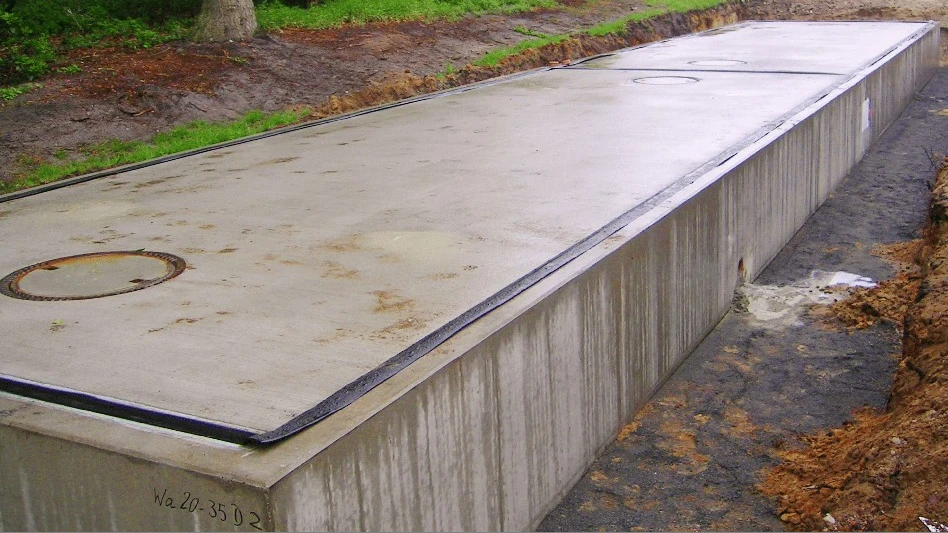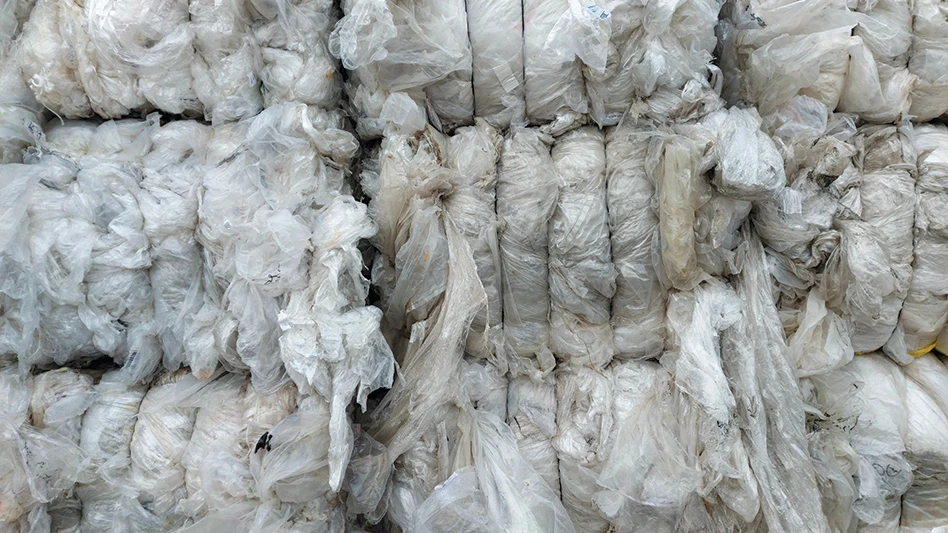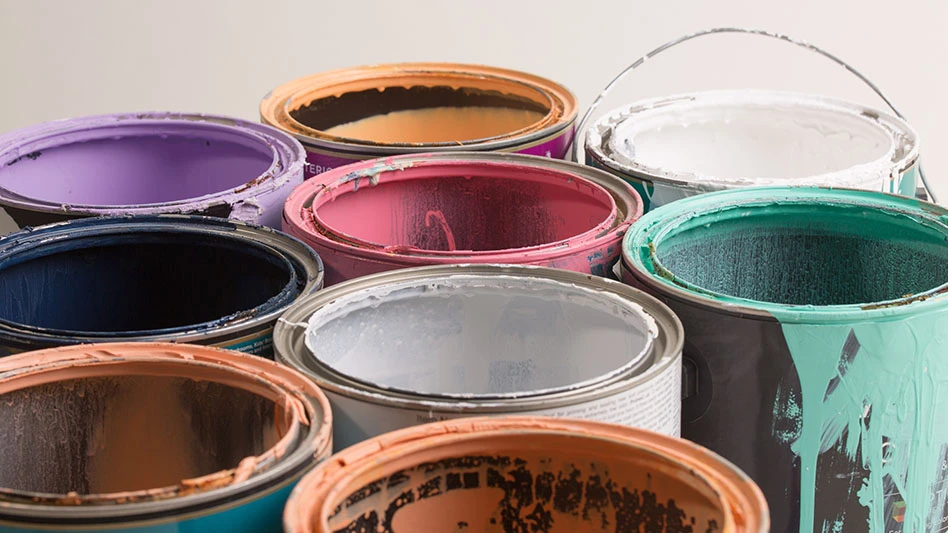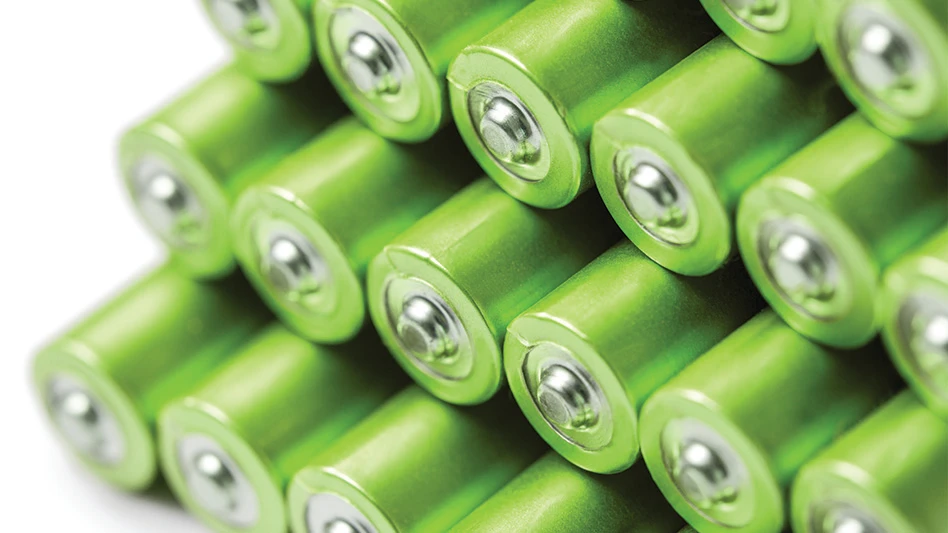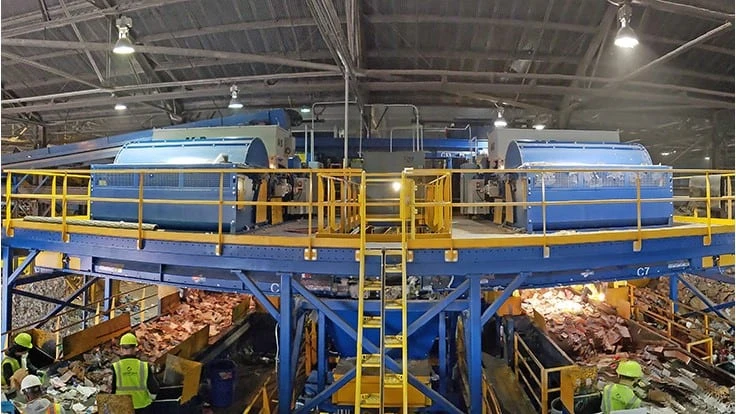
Photo provided by MSS and the CP Group.
Paper recyclers are facing a trend of more packaging, or “brown.” grades being generated and an ongoing reduction in communication, or “white,” grades of scrap paper. For recyclers who operate material recovery facilities (MRFs) that take in mixed material streams, using optical sorters to find every last piece of white paper has been one response.
Felix Hottenstein, sales director of Tennessee-based MSS Optical Sorters, which is part of the California-based CP Group, says his company’s FiberMax optical sorting technology has been adopted by several companies who want to stay in the high-grades scrap paper game even in the face of declining generation. MSS is one of several companies offering such technology to recycling plant operators. (For a more complete list of such companies, search the category “Separation Systems, Imaging” on this web page.)
“We have definitely seen the trend of positively sorting out newspaper and mixed paper out of contaminated fiber streams,” Hottenstein says. He adds that optical equipment can be configured to adjust to material streams and markets, however.
“The selective sorting capabilities of optical sorters allow the operator to make specific adjustments and decisions based on incoming composition and outgoing quality requirements, such as whether to sort out the old corrugated containers (OCC) or not,” the equipment supplier says.
Installing one or more optical sorting devices will use up a percentage of a MRF’s capital equipment budget, so plant operators measure the potential return on investment (ROI) carefully and in several ways, Hottenstein says.
“ROI is calculated by mainly using two metrics,” he comments. A higher volume of material at a consistent quality can boost income, while replacing hard-to-find (and increasingly higher paid) manual pickers can yield cost savings.
A device like the FiberMax, Hottenstein says, “can perform so many more picks per minute than any manual quality control station; the quality of the generated paper grade is always better and definitely more consistent.”
Regarding the labor situation, he says, “MRFs are currently having a very hard time even finding manual sorters in the labor pool, and only automation such as the FiberMax can solve this issue.”
In California, MRF operator Recology has installed three optical devices made by France-based Pellenc to help sort fiber at its Recycle Central facility in San Francisco.
“We’re very happy with that installation; I like the Pellenc units a lot,” Recology General Manager Maurice Quillen told Recycling Today for a March 2020 article. “We are sub-1 percent contamination on our fiber bales at this point, and we are negatively sorting fiber. I don’t think there are too many MRFs that are negatively sorting fiber at sub-1 percent contamination, and the Pellenc optical sorters are key to that whole process.”
Farther up the United States Pacific Coast in the Pacific Northwest, Hottenstein says FiberMax units installed at a MRF in that region have earned similar praise.
An analysis of two FiberMax units installed there in 2017 to upgrade the old newspapers (ONP) grade showed a 62 percent savings in manual sorter costs and an ability for the ONP grade “to meet new foreign market requirements of 0.5 percent ONP contamination after quality control.”
As in the metals and plastics sectors, optical devices seem poised to be part of the future of paper recycling. “The consistency and higher sorting performance of [optical units] allow MRFs to produce a consistent quality in order to receive the standard market price,” states Hottenstein.
Get curated news on YOUR industry.
Enter your email to receive our newsletters.
Latest from Recycling Today
- Call2Recycle Canada reports battery recycling increase in 2024
- Minnesota selects Circular Action Alliance as PRO
- GIC launches automotive plastics circularity pilot
- Hydro grows postconsumer scrap use in 2024
- BlueScope’s net profit declines
- Syklo investing in circular ‘hub’ for plastic recycling, biocomposite production
- Tomra reports profitable Q4 2024
- US ferrous scrap, DRI consumption rise in 2024
